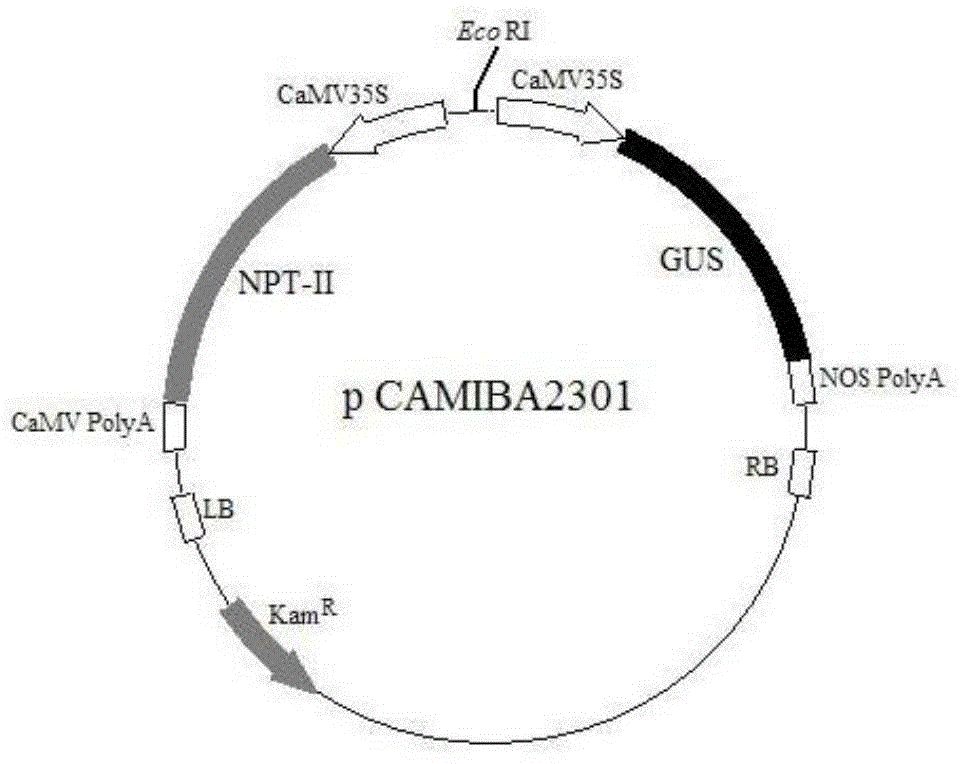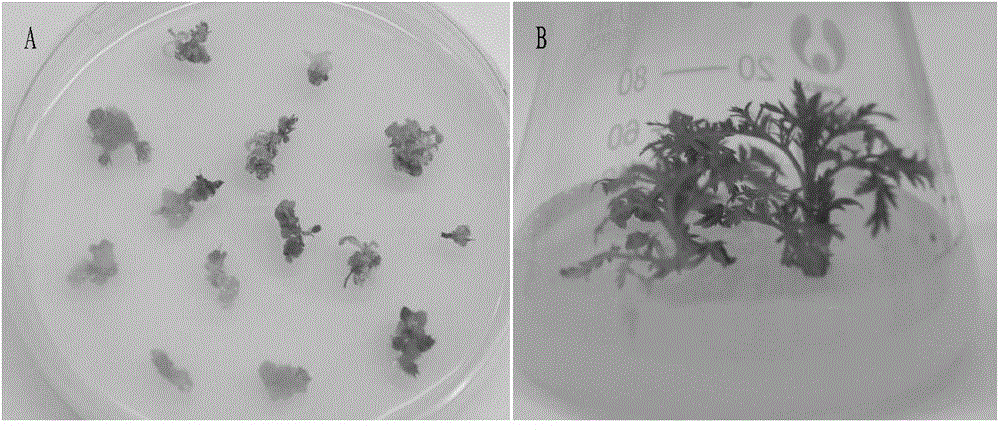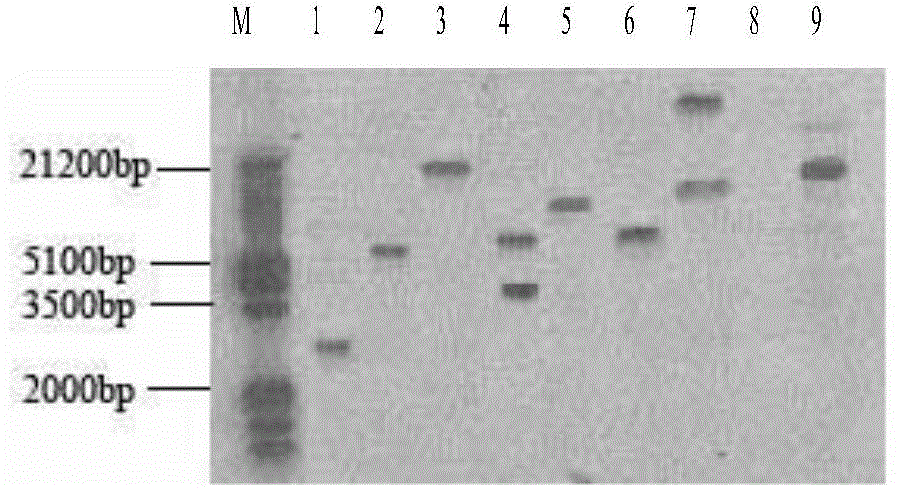Transgenic breeding method of sweet wormwood
A transgenic, Artemisia annua technology, applied in horticultural methods, botanical equipment and methods, horticulture, etc., can solve the problems of low transformation efficiency, laborious, difficult transgenic Artemisia annua, and achieve the effect of ensuring uniformity
Inactive Publication Date: 2015-04-29
SHANXI UNIV
View PDF1 Cites 4 Cited by
- Summary
- Abstract
- Description
- Claims
- Application Information
AI Technical Summary
Problems solved by technology
Since then, researchers have done a lot of work on transgenic methods of Artemisia annua, with little success
Many studies have proved that transgenic Artemisia annua is very difficult because it is laborious, time-consuming, and more importantly, the transformation efficiency is very low (less than 10%) (Liu et al. 2011)
Method used
the structure of the environmentally friendly knitted fabric provided by the present invention; figure 2 Flow chart of the yarn wrapping machine for environmentally friendly knitted fabrics and storage devices; image 3 Is the parameter map of the yarn covering machine
View moreImage
Smart Image Click on the blue labels to locate them in the text.
Smart ImageViewing Examples
Examples
Experimental program
Comparison scheme
Effect test
Embodiment 1
[0025] The transgenic experiment was carried out with the Artemisia annua cultivar 'Youyang 1' as the recipient.
the structure of the environmentally friendly knitted fabric provided by the present invention; figure 2 Flow chart of the yarn wrapping machine for environmentally friendly knitted fabrics and storage devices; image 3 Is the parameter map of the yarn covering machine
Login to View More PUM
 Login to View More
Login to View More Abstract
The invention provides a transgenic breeding method of sweet wormwood. The transgenic breeding method of sweet wormwood comprises the following steps: taking immature sweet wormwood inflorescence as an explant, infecting the explant by using an agrobacterium solution with exogenous genes, co-culturing the explant for 2-3 days, putting the explant on a selective-pressure culture medium to induce and generate a callus tissue, further inducing the callus tissue into a regeneration plant, then carrying out molecular biological detection on a reporter gene, and identifying a transgenic plant in the regeneration plant. According to the transgenic breeding method of sweet wormwood, the immature sweet wormwood inflorescence is used as the explants and is co-cultured with the agrobacterium EHA105 strains, so that a transformation rate is high; the highest transformation rate is 17.2% and is higher than that of the common leaf explant transgenic rate in the current sweet wormwood transgenosis by 8.59%. A novel transgenic system is provided for the genetic transformation of the sweet wormwood; meanwhile, the reference is provided for other plants difficult in agrobacterium-mediated transformation.
Description
technical field [0001] The invention relates to gene breeding, in particular to a method for transgenic breeding of Artemisia annua. Background technique [0002] Malaria is a serious life-threatening disease, with approximately one million deaths worldwide and approximately 3.5-5 million new cases each year (Graham et al.2010; Graham et al.2010; Milhous and Weina 2010 ). [0003] For a long time, Artemisia annua is a special medicinal plant used to treat malaria. Artemisinin, a sesquiterpene lactone endoperoxide, is currently recognized as the most effective compound against multidrug-resistant Plasmodium falciparum (Weina 2008; Li et al. 2006). Artemisinin also has the ability to treat certain cancers and other viral and parasitic diseases (Efferth 2007; Efferth et al. 2008; Weathers et al. 2011). However, due to the low artemisinin content in A. annua plants ( 0.01%-0.8% of dry weight). The use of artemisinin-based drugs has been limited, especially in developing coun...
Claims
the structure of the environmentally friendly knitted fabric provided by the present invention; figure 2 Flow chart of the yarn wrapping machine for environmentally friendly knitted fabrics and storage devices; image 3 Is the parameter map of the yarn covering machine
Login to View More Application Information
Patent Timeline
 Login to View More
Login to View More IPC IPC(8): A01H4/00
Inventor 王景雪
Owner SHANXI UNIV
Features
- R&D
- Intellectual Property
- Life Sciences
- Materials
- Tech Scout
Why Patsnap Eureka
- Unparalleled Data Quality
- Higher Quality Content
- 60% Fewer Hallucinations
Social media
Patsnap Eureka Blog
Learn More Browse by: Latest US Patents, China's latest patents, Technical Efficacy Thesaurus, Application Domain, Technology Topic, Popular Technical Reports.
© 2025 PatSnap. All rights reserved.Legal|Privacy policy|Modern Slavery Act Transparency Statement|Sitemap|About US| Contact US: help@patsnap.com



